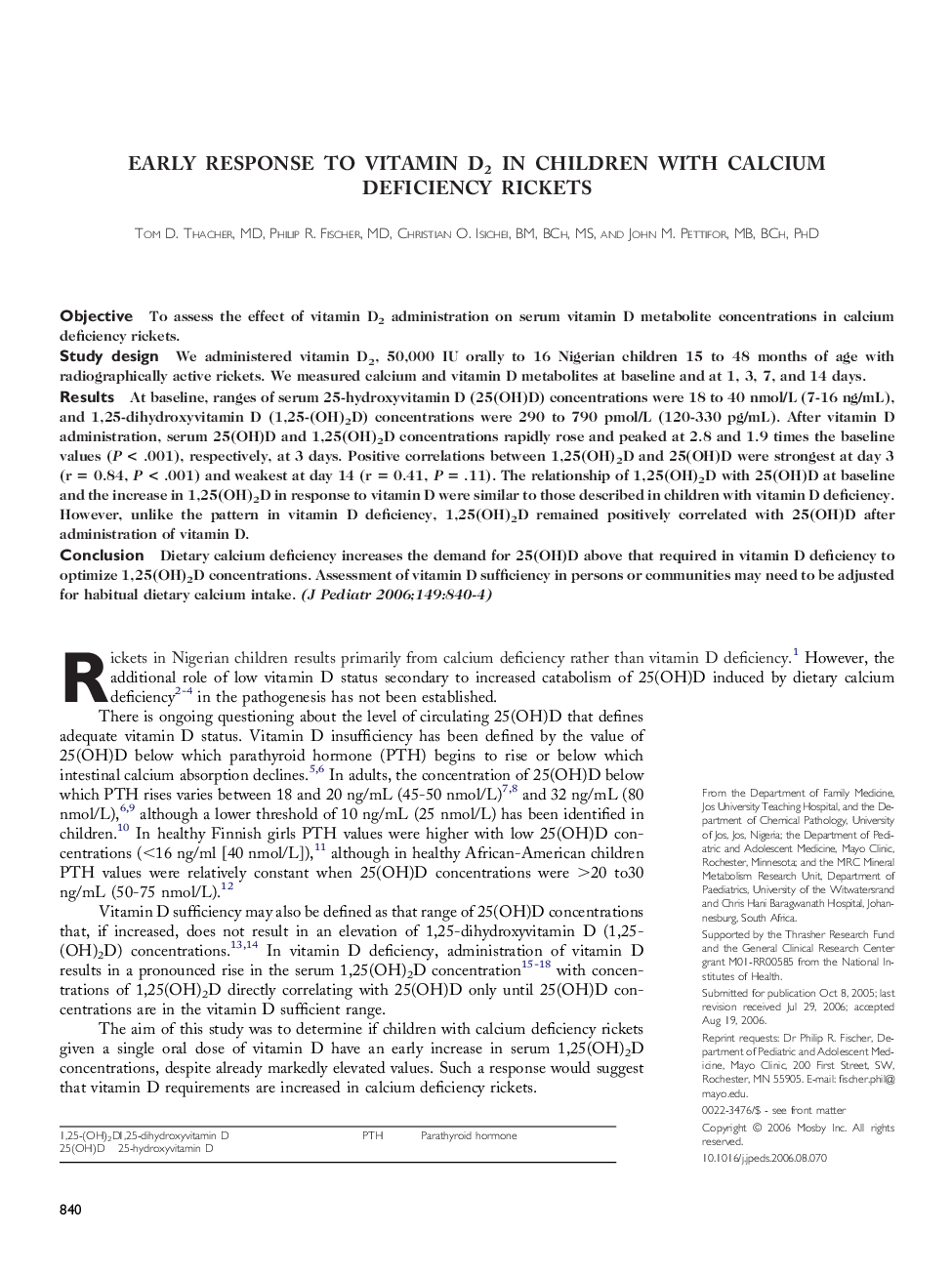| Article ID | Journal | Published Year | Pages | File Type |
|---|---|---|---|---|
| 4169103 | The Journal of Pediatrics | 2006 | 5 Pages |
ObjectiveTo assess the effect of vitamin D2 administration on serum vitamin D metabolite concentrations in calcium deficiency rickets.Study designWe administered vitamin D2, 50,000 IU orally to 16 Nigerian children 15 to 48 months of age with radiographically active rickets. We measured calcium and vitamin D metabolites at baseline and at 1, 3, 7, and 14 days.ResultsAt baseline, ranges of serum 25-hydroxyvitamin D (25(OH)D) concentrations were 18 to 40 nmol/L (7-16 ng/mL), and 1,25-dihydroxyvitamin D (1,25-(OH)2D) concentrations were 290 to 790 pmol/L (120-330 pg/mL). After vitamin D administration, serum 25(OH)D and 1,25(OH)2D concentrations rapidly rose and peaked at 2.8 and 1.9 times the baseline values (P < .001), respectively, at 3 days. Positive correlations between 1,25(OH)2D and 25(OH)D were strongest at day 3 (r = 0.84, P < .001) and weakest at day 14 (r = 0.41, P = .11). The relationship of 1,25(OH)2D with 25(OH)D at baseline and the increase in 1,25(OH)2D in response to vitamin D were similar to those described in children with vitamin D deficiency. However, unlike the pattern in vitamin D deficiency, 1,25(OH)2D remained positively correlated with 25(OH)D after administration of vitamin D.ConclusionDietary calcium deficiency increases the demand for 25(OH)D above that required in vitamin D deficiency to optimize 1,25(OH)2D concentrations. Assessment of vitamin D sufficiency in persons or communities may need to be adjusted for habitual dietary calcium intake.
